Life, Death, & The Sefirot: FFVII’s History & Remake’s Future in a New Symbol of Reunion
by X-SOLDIER June 29, 2020 0 commentsSefirot Path Analysis: VII – Cloud & Aerith
STROKE VII – Pillar of Mercy (Center) – Air – Aerith & Cloud – Final Fantasy VII

Cloud & Aerith each have imagery related to the element of air. Cloud falls from the sky to encounter her in the church, is shown floating weightlessly through empty space when he’s depicted in his mind, and flies through the cosmos in his superconscious state. Aerith talks about the sky itself as a metaphor all the time in Remake, everyone who can’t see the Whispers intervene with her act invisibly and just appear like a strong & sudden wind to those two aren’t able to see them directly. The Pillar of Mildness exists in a balance between aspects of the Pillar of Severity on the left and the Pillar of Mercy on the right, and it’s a balance of male & female aspects as well – which all matches Cloud’s & Aerith’s relationship throughout the game.
VII, the final brush stroke, runs a clear and direct path from Da’at to Tif’eret to Yesod to Malkhut. This is the original story straight through. From a thematic sense, it follows these four points:
- Da’at “Knowledge” – The state of unity from of all of the other Sefirot as knowledge
- Tif’eret “Beauty” – Compassion that keeps the above two opposed emotions of “Grace, giving, & inspiration” and “Strength, discipline, & judgement” in balance
- Yesod “Foundation” – Coherent knowledge & connecting to the task set to be accomplished
- Malkhut “Kingship” – Exaltedness & Humility. The Giver & the Receiver. The energy of all other Sefirot flow into this one, as it has no light of its own. This is because it is the one part of the tree that represents Humanity rather than a direct aspect of God.
End-to-end, this is the main story of life & death in Final Fantasy VII, as informed by the Sefirot, as it applies to the original 5 characters of Sephiroth, Aerith, Cloud, Tifa, & Zack in that world. These are the central themes that do not change. They are the core aspects of what make up the guiding structure of the game’s narrative. The Pillar of Mildness provides the path as well as the rules for Aerith’s & Cloud’s relationship. This start in Da’at with or main antagonist, the human-alien hybrid Sephiroth’s a duality between the Planet/Jenova. At the opposite end of the story, Malkhut has that same duality balanced between the half-Cetra Aerith with Holy, & the Jenova-experiment Cloud with Meteor. Along that path, Tif’eret represents Tifa’s relationship with both Cloud & Aerith. Yesod is the goal that they are all attempting to achieve in order to facilitate saving the Planet. Malkhut provides the rules for Aerith allowing Holy to be revealed, Cloud allowing Meteor to be revealed. The final relationship between Da’at & Malkhut is how Sephiroth is concealing Holy & revealing Meteor.
The original ending was how Cloud’s actions of defeating Sephiroth restores the flow of energy into Malkhut, which reveals the Divine Light of Holy. That leaves both Meteor & Holy revealed leading to chaos, but because that act of altruism also restored the balance so that humanity was no longer in conflict with the Will of the Planet, this brought all ten Sefirot into balance, which allowed Da’at to manifest as conscious awareness of the superconscious state of the Planet, so that it could guide the Lifestream to save humanity from Meteor. All of the rules that exist for every one of those pieces of the story are laid out here, so it’s helpful to look at how these things have come about thus far in Remake, and how they’re being represented. Additionally the framework of the ending will allow us to analyze both paths to the Promised Land, how that stays in line with the original story framework, what they represent, & why they’re in Remake.
Final Fantasy VII, Remake, and Rules of the Sefirot
On one side, we have a half-Cetra who can listen to the Planet, Aerith. On the other, we have a Jenova-experiment who can hear the call of Reunion, Cloud. They each only share a partial connection to either the native manifestation of Keter in the Planet or the alien manifestation of Keter in Jenova, but as a result each of them experience moments of superconscious awareness connected to those entities. This connects them to a part of balance leading towards Malkhut & trying to bring about the manifestation of the Promised Land that is associated one of the Wills of those entities – Revealing Holy & Concealing Meteor as The Will of the Planet, vs. Revealing Meteor & Concealing Holy as The Will of Sephiroth/Jenova. Those are the core concepts of life & death as they’ve always been. It’s why those two forces are perfectly balanced. It’s why Cloud & Aerith’s destiny is a perfect match when Cait Sith reads their fortunes at the Temple of the Ancients in the original game. It’s why it’s their love for one another that always brings them together & ultimately saves them – but when following the path that leads to either Holy or Meteor, it never has a future that keeps both of them together forever.
What’s notable here is that Sephiroth in the original game is still an agent trying to fulfil things to literally in accordance with what directly matches Jenova’s Will – consuming the Planet and then sailing out through the cosmos to another world on its husk as Meteor. The Unknown Sephiroth who appeared at the end of Remake, cut a path into the Singularity, and then met Cloud at the Edge of Creation isn’t. Neither Holy nor Meteor were active at the start of Final Fantasy VII. This is why the Planet is in a stalemate struggle caught at the tipping point on the edge of life & death at the start of the story. The Unknown Sephiroth wants to use both in order to create another version of the Planet in a different reality which will also destroy the one that the story took place in. Ultimately this gives him the same core motivation, with the same consequences to the Planet itself – but resulting in a very different ultimate outcome. This is the alternate reality we see at the end of Remake, as that is a Promised Land for someone other than just Sephiroth.
Since Cloud begins representing the Receiver in Malkhut he only receives connections to his mind when they are initiated by Sephiroth where Cloud’s mind glitches out. This is where we get to learn for certain that this interaction is tied to Keter/Da’at and a state of superconsciousness, because the Edge of Creation is a literal location where Sephiroth describes all of time & reality from a superconscious perspective, after a burst of light pulls Cloud’s awareness there. Aerith as the Giver in Malkhut can initiate that exact same type of connection to another being from the Planet but can only partially control it. We see this when Aerith mentally communicates to Marlene & the young girl learns something Aerith makes her keep secret. This happens again when Aerith is psychically calming Red XIII, he gains knowledge about the Whispers. This shared connection is why her hand uses the same glowing particle effects that we see escaping from the injured Whisper Harbinger, and the same glitching audio & green visual filter as when Cloud’s mind is being invaded by Sephiroth. This shared state of superconsciousness between Cloud & Aerith is why Cloud perceives the energy of the souls returning to Planet in Sector 7 when Aerith calls out to him in Chapter 14 – but those details don’t appear in Tifa or Barret’s literal versions of that scene. This is also why, in Chapter 2, during the initial physical connection between them Aerith inadvertently gives Cloud the ability to see the Whispers, even though she doesn’t know what they are and why Cloud inadvertently passes this specific ability along to others, explaining why Rufus can perceive them but not Tseng in Chapter 18. Additionally, this entangled connection between the two of them is also why Cloud keeps receiving visions of the future about Aerith during those moments of superconscious awareness, as well as why Cloud is states that he’s able to feel Aerith calling out to him & Tifa feels that connection as well, regardless of who Cloud has a scene within Chapter 14.
Life, Death, & Another Reality – Reuniting, Reunion, & Remake
In Remake, Cloud & Aerith are being pulled towards Malkhut and their paths leading there explain and symbolize two different versions of the Promised Land, in order to help players better understand the choice between then that they will eventually have to make. There are different forms of symbolism to help represent them more clearly in Remake as well. This starts with the flower that Aerith gives Cloud that symbolizes when lovers were reunited – a concept of reunion but a metaphysical one, the opposite of Jenova’s physical Reunion which was bringing back the dead through mimicry. This is also differentiated in the Japanese text, with the flower symbolizing “再会” (saikai) which is the Japanese word meaning to be reunited, as opposed to Jenova’s “リユニオン” (reunion) which is literally borrowing the English word “Reunion” for that identical but differentiated external concept. That is also occurring as Cloud is serving as Jenova’s Reunion for her by allowing her to see Zack’s mannerisms in him. This is why she offers him the flower for free, tying the idea of those two concepts of being reunited & Reunion together. Just like Aerith is initially remembering her connection to Zack because of Jenova’s Reunion, Cloud then follows her reunited lover symbolism, and gives this exact same flower to Tifa (furthering the entangled unity discussed in Stroke VI in Tif’eret and the interconnected relationship between the three of them, as well as the connections to Zack & Sephiroth).
This flower specifically comes up again when it’s needed to demonstrate the role of Aerith as the Giver and connected to the Keter of the Will of the Planet. This is why in Chapter 8, Aerith is reaching out to listen to the Planet by giving a connection & talking to these flowers. When Aerith rescues Marlene in Chapter 12, shortly after they share their superconscious connection, Marlene mentions that she thinks Aerith smells nice, like their flower. Finally, in Chapter 17 after her connection with Red XIII informs him about the Whispers, when speaking about losing her way she says, “Follow them. The yellow flowers.” – and then the scene shows the flower petals falling, and the visuals fade to reveal the Whispers who are acting as the Will of the Planet. This is why when fighting Whisper Harbinger, there are the glimpses of Red XIII & his cubs 500 years later, Meteor, Cloud vs. Sephiroth, & Aerith’s funeral using the same scenes as they were shown in Advent Children. This is ultimately leading to the literal future that we know occurs in Advent Children with the Promised Land being a path to personal emotional salvation like Aerith says in Chapter 17, “Someday, maybe, I’ll find it in me. But now? Not even if I wanted to.” – because she hasn’t come to terms with Zack’s death, especially because she is experiencing Jenova’s literal Reunion with Cloud.
This is why Aerith’s path is her focus on the natural cycle of life & death, and fighting to show how important the memories are of the people we love before they’re gone – but also how we treasure memories about them in other new people we meet. It’s the nostalgic feeling of being reunited with someone, even though they’re no longer alive. This why the first half of the story is about life & treasuring it by creating important & treasured memories with the people who we love. This means that her death forces Cloud to explore the opposite side of this in the second half of the story since he’s left with any existing connection of her other than just his memories, which is why he deeply yearns for that alternative solution – Reunion. He receives life, which causes him to experience survivor’s guilt on top of all of the loss and trauma he faced. Reunion is also connected to the emotional sense of no longer being able to persist, and longing to just succumb to being united in death. This is what was addressed from a literal sense with Geostigma in Advent Children, by showing the metaphorical side of Jenova’s virus, where Cloud gives up hope & wanting to live because of the pain that those memories of people you lost bring. Meteor & Jenova represent the natural force of death where the Promised Land for that singular entity was a literal one of another new world to feed on – reuniting the living & the dead as she continued to consume planets in Reunion – Sephiroth lives, Cloud dies. Holy & the Planet represented the natural cycle of life at a planetary level, which is why the Promised Land there is a metaphorical one as a part of that cycle – remembering those who have passed on & treasuring our memories with them as we continue to live on, the concept of being reunited – Cloud lives, Sephiroth dies.
This is why now in Remake, this Unknown Sephiroth is being used to represent the idea of what the opposite of a normal life would look like: If you had the power to re-write the past by creating a different future – that would be a path Life and Death. The rules of Malkhut don’t allow for either Holy or Meteor to be revealed as a part of a selfish act, and they’re the forces that are necessary to achieve this. This is why the Unknown Sephiroth (having the knowledge of reality from a superconscious perspective) has conceived of a path where, because he’s a hybrid acting as Da’at to the forces of both Life & Death, he can align a different future to match with his own goals so that he can achieve victory – by also ensuring that it’s a version of a future that Cloud also wants for himself. This is also why the portrayal of Sephiroth is connected back to him as a sympathetic villain who needs external assistance to escape the prison of his own megalomaniacal obsessions, in order to return to being a stable and healthy individual.
While Remake‘s new elements lead to two different futures – the main game’s story is still focused on all of the same things as it did originally and isn’t going to change, because you need to fully understand those forces of Life & Death between the Planet & Jenova in order to really understand what you’re choosing. Even after you defeat succeed in what you need to stop the Planet from dying to Reunion, you don’t have to follow Destiny: You don’t have to choose to have Sephiroth or Cloud win that final confrontation. This is why it’s the final choice between having a normal life and choosing one of power that Elmyra introduces. This is why the Remake path is offering a physical salvation, but one that comes with that cost. In creating a new future, that new world’s Cloud & Sephiroth wouldn’t be the same ones as the two at the Edge of Creation. If they choose to persist in that superconscious state, they’d exist outside of reality – keeping all the their memories and power, but they can’t have the normal life in the future that power brought them. If they choose to have their consciousness exist in that world, they’d give up all of those memories and the power for a normal life. Sephiroth would be relying on Zack to restore him to his old self, just as much as Cloud would be relying on Aerith & Tifa to help restore his mind – and in giving up their power, they can only hope that their trust in others is well placed enough to ensure their own salvation is the one that they hoped for – since the path leading here proves that even Destiny isn’t guaranteed.
The Path to Promised Lands of Malkhut’s Giver & Receiver
Aerith’s core story is currently happening, so we see her developments directly, and most of Cloud’s as a mirror to hers, and knowing where the story goes. The most clear moment is when Wedge is forced to confront that the Plate is going to fall, huge numbers of innocent people are going to die, & doesn’t feel like he really can make a difference, Aerith tells him, “…but that’s no excuse to give up. I don’t wanna look back one day… and wish I’d done it different. Right here, right now, I need to know I did everything I could.” – which is also the scene that singularly defined Aerith to her English voice actress, Briana White. It’s also why in Aerith’s version of the Chapter 14 scene she tells Cloud, “Everyone dies eventually. So we need to make the most of the time we have – to live our lives the way we wanna live. Every minute… every moment, matters. I’m glad I met you, Cloud. I really am. I’m grateful for all the words we’ve shared. For all the moments and the memories. You’ve made me more happy than you know. And I’ll always cherish what you’ve given me. But… But whatever happens, you can’t fall in love with me. Even if you think you have… it’s not real.” to which Cloud protests, “Do I get a say in all this? I’m coming for you” and then she replies, “If that’s what you want. Thank you.” –even seeing that scene itself rather than one with Barret or Tifa is a result of the player’s choice in pursuit of what they want in a way that Remake allows for, but it’s also a setup to make it clear that Cloud wants to be able to make a choice himself and not just the one to choose to live in Advent Children. This is why it’s Elmyra’s quote that sets that up for him in context to Aerith, so that we can see those elements early on.
Cloud would never willingly let Aerith die, and Aerith would never willingly let Cloud erase every precious moment that they ever shared together… but one of those sacrifices HAS to be made. That’s the cost of the future – an act of altruism by a mortal where there is a giver and a receiver. This is their ultimate role as Malkhut. This means that whether or not you choose to defy Destiny – the rules & framework that govern the story & events in Final Fantasy VII do not change for Final Fantasy VII Remake. The story is the same that it has always been, it’s just that in Remake as returning players, we’re already in the same place of superconscious awareness that this Unknown Sephiroth is, and as a result we can see the Whispers. This is why instead of the ending being a matter of personal interpretation – it’s still an interpretation, but just one where as the player at the end of everything, standing on the Edge of Creation after everything that you’ve gone through, you have to decide which one of those two paths matters most to you – the same way that Cloud does when Elmyra asks him not to involve himself in her daughter’s life. He can’t just stand by, do nothing, and only hope for the best, because Cloud knows what that means – so he chooses to stay committed to saving Aerith – no matter what. It’s why the writers & development team are bringing that message with Remake, because that’s the same passion that they have about making the game itself.
A Perfectly Balanced & Helplessly Entangled Destiny
From a story perspective, Aerith is the thing that will bring Cloud to emotionally invest in fighting against Shinra as more than just a mercenary & Cloud’s predicament is what will give Aerith the strength to defy destiny and try to stop Sephiroth. They’re two two sides of the main story, but individually, they have difficulty staying both balanced and on track without external forces to keep them moving – because they just want to remain in balance together forever. It’s why upon being reunited in Chapter 8 is a series of small side quests where they feel committed to one another. Cloud escorts her back home to Sector 5, then she escorts him to Sector 7, and then they want to stay together – but their individual needs aren’t aligned. Then, like we see at the playground – they can’t fully connect about those things to each other because of the existing barriers with Cloud’s mind, so they just struggle with not wanting to leave each other. This is why Tifa gets brought into the mix to help them align their goals & work in tandem to assist her in Wall Market – pulling the story’s path forward from Da’at into Tif’eret and starts to push them towards Yesod.
As covered in much greater detail the previous section on Stroke VI while discussing the connection in Tif’eret, this external force of motivation fuels Cloud’s & Aerith’s part of the story throughout the game, often using the draw of reuniting with one another as a motivating factor. When Cloud is closed off and tries to leave her behind, Aerith opens up and invites herself along. When Cloud is eager to push forward, Aerith feels compelled to hold back. The whole story in Remake has them being pulled along by external forces up until the Destiny’s Crossroads – at which point Cloud & Aerith together are responsible for pushing the story forward by making a choice together. This event at Destiny’s Crossroads is what starts to put Cloud & Aerith out of sync with one another – making their impulses to stay together in this short time they have together feel even more important than ever. This is because every time they move forward together, they draw closer to when their paths are going to be split apart, but their entangled states of superconsciousness have added in an extra layer of depth to their struggle that helps echo things to returning players and strengthen the core themes.
The Past’s Journey into Cloud’s Promised Land
Saving the world from Meteor is not the emotional conclusion of the story for Cloud. His story’s Promised Land is shown in Advent Children, where after fighting through his emotional trauma & existential crisis, but still left with his crippling agony from losing people he loved, and then after promising that he’d be ok without them, realizing that he was failing at upholding that promise. This is a theme that Remake has already been setting fans up for and exploring in extreme detail. Cloud’s mercenary work mirrors Zack’s ambitions but also the types of mundane odd jobs he returns to doing after the end of the original game. The children at the Leaf House Orphanage that helps with Aerith is very reminiscent of the life he has during Advent Children caring for orphaned kids like Denzel. It’s why an instrumental-only rendition of Remake‘s new theme “Hollow” is playing in the Sector 5 slums for setting up that emotional connection well in advance of when the future installments could be making that callback, or even drawing references to it if we get flashbacks to Aerith & Zack’s pasts during Crisis Core. This is so that should those events come to pass, they’ll have the lingering familiarity to the players – who will also experience the absence of Zack’s & Aerith’s presence in those moments, to better understand Cloud’s pain faced with returning to a normal life.
When someone close to you dies unexpectedly, you want to get them back. Because you can’t, you try to return to the familiar things you always used to enjoy – but all of those routines end up triggering moments of overwhelming & painful sadness because they’re also bringing back the memories of that loss. You can’t just stop doing those things because you don’t want to forget them, but simultaneously you know they wouldn’t want their absence to make you lose your own love for those things. Sometimes the only thing you want is just to erase your own pain and bring them back. It’s connected to the sense of nostalgia and longing for something precious, but can’t revisit that experience the same way anymore. Everything in Remake is fundamentally pushing at these human emotional experiences with how people cope with loss. Being able to defy Destiny gives you a taste for what it’s like thinking that you can do something… and still failing is a risk. It’s wanting to be able to choose for yourself, so that your own actions matter, but knowing that there are some things that are always out of your control. It’s about not complacently accepting those things when they matter to you. The connections there mean something to you – and you’re supposed to want to fight for that.
Since Final Fantasy VII has always been built on a framework of exploring the concepts of life, consciousness, and connections to the spiritual energy and the creation of the fabric of reality itself, it brings along the question of what would you do… if you could remake things? Not for yourself, but for the characters who you treasure. Would you allow them to go through the terrible things because those specific good moments are too precious to risk losing, or would you fight to change them for the better knowing that you won’t have the guarantee of comfortingly familiar end results if you do? Could you justify overwriting things if giving them a chance felt important to you? This is a part of the question that the writers & development team have to answer as a part of choosing to even go about making Remake at all, which is why it’s important to examine the themes of what that means. They’re literally remaking a world that they love, and they have all of the power to do anything that they want – they want to achieve something for themselves, and something for everyone else at the same time. It’s why having this message about everyone’s experiences with these concepts because of the original Final Fantasy VII being the reason why Remake even exists, is why it’s important to acknowledge what Remake means in that context.
The Struggle Between Balance & Duality at Destiny’s Crossroads
The cinematography choices tell us a lot about this push-and-pull in the narrative between Aerith & Cloud and Sephiroth at the edge of Destiny’s Crossroads as soon as Destiny comes. When the flashback to Zack’s fate begins, the camera pans up out of Cloud’s head… but when it ends, the camera is zooming out from Aerith looking up in pain. Sephiroth slices a rift into the Will of the Planet & Destiny itself, beckoning Cloud, the Receiver in Malkhut, to follow him in – but Aerith grabs his arm like she did when they first met & their entanglement began & stops him saying “This is the point of no return.” before meeting Cloud’s eyes…
It’s then that her expression changes, and she drops hold of Cloud’s hand. She knows that she would regret not giving them the opportunity to try and change Destiny, even though she believes in where it’s ultimately taking them. It’s an existential conflict of her emotions, beliefs, and feelings. It’s why we see her shaking her head & stepping forward to hold the rift open – because she’s primarily the Giver in Malkhut. It’s this struggle between the opposing paths to the Promised Land that this represents that keep Aerith & Cloud together and also was always held them apart. It’s why Aerith is hopeful for this even though she’s uncertain and afraid.
Aerith’s Path & Motivations at the end of Remake
We know that at some level, this internal struggle that she’s experiencing is what she mentioned earlier on in Chapter 17, “The Shinra Electric Power Company isn’t the real enemy. It started with them, sure… but I promise you… there’s a much bigger threat. I just want to do everything in my power to help. All of you… and the Planet. I’m lost in a maze, and… every step is taking me further from the path… Every time the Whispers touch me… I lose something. A part of myself.” Aerith’s memories are the thing that she treasures so deeply, and as a Cetra we know that she also places enormous value on the natural flow of life and that it’s natural for everything to die eventually – which is everything that this Unknown Sephiroth stands as an affront to. It’s not just the simple cycle of death and life. The Sefirot is the power of creation itself, and it’s the threat of the very fabric of this world she loves being unmade & remade into something else. She genuinely treasures every single moment she spends with Cloud and how happy they have made her, and she stands to lose that.
This is why when Aerith is describing the stakes that they’re facing, she states, “What you heard just now were the voices of the planet. Those born into this world. Who lived and who died. Who returned. They’re howling in pain. They… Their words… they don’t reach him. All the moments and memories, precious and fleeting… they’re like rain rolling off his back… And when they’re gone, he won’t cry… or shout… or anything. He’d tell you that he only cares about the planet. That he’d do everything in his power to protect and preserve it. But this isn’t the way it’s supposed to be. There’s no greater threat to the planet than him. Sephiroth has to be stopped. He has to be. And that that’s why… I’m asking you to help me. I know that together, we can do this. But if we do… We’ll be changing more than fate itself. If we succeed… if we win… we’ll be changing ourselves… I guess… maybe, that’s why I hesitated.”
She’s torn between doing everything in her power to help & not having any regrets with the way that she lived, and going against her nature to defy destiny. It’s why she’s terrified of the future, and she is filled with uncertainty about the Unknown Journey that they set off to, despite telling Tifa that the future not being set was something she found comforting – we know that the truth is that Aerith is deeply afraid of venturing out towards this great, never-ending sky, but she still believes that the future isn’t set in stone, even when that’s terrifying. Again, these are the same fears that the writers & development team face – and that they know returning players will feel as well. This is why connecting those fears and insecurities into the main themes around loss & treasured memories are critical to making the story really dig into the same emotions that the original did.
There are lots of ways for this to keep being built upon for new players, since they may not be immediately aware of Remake‘s already significant usage of parallels from Crisis Core. Rhe concept of Aerith being frightened by the sky, was introduced, when her life changes when “some guy fell out of the sky” and then that happens again & she acts the same way. She even gives Cloud a materia seemingly as an excuse to talk about hers & show him her pink bow – which was gift Zack bought that he bought for her on their “one-day anniversary”. With Zack, she starts to talk optimistically about the sky being closer on the plate, just before comforting Zack about the loss of a friend he was trying to save – connecting to the concepts about Reunion & loss that Remake still maintains. In Remake, the sky is the concept linked to expanding the possibilities beyond the bounds of Destiny, which is why it’s where she meets Cloud.
The one thing she told Zack she wished for was to spend more time with him. Because Aerith is a Cetra, it’s important to remember in upon meeting Cloud she’s actively experiencing the type of literal physical Reunion that Jenova represents. This is why initially, she acts the way that she does towards Cloud when they first meet, saying things like, “Oh, I’m sure you are. So?” as if she’s just talking with him again. Later on, she just mirrors the same moments from her first date with Zack in Crisis Core as soon as her & Cloud reach the playground in Remake, like asking him if he knows other people in SOLDIER & commenting on how pretty his eyes are. Especially because in Remake Aerith’s superconscious state seems to intrinsically give her a sense of what’s happening with Cloud given her comments to him during Chapter 14 when she starts to try and find out what Cloud wants to do. We know that this is a struggle that’s only going to grow on the journey ahead, so it’s likely that we’ll get to understand some more of these things from her perspective during Gongaga as those developments to her & the truth about Cloud’s past start to become more central to the story.
It’s also why eventually it’s going to get to a point where during their date at Gold Saucer, she’s going to realize that she genuinely treasures him. She cares about Cloud more than just as her chance at closure & being reunited with the lover she lost. She wants an opportunity to meet the real Cloud. It’s why the idea of Cloud’s temptations about wanting to see her again aren’t only about his personal pain, but also about him potentially giving Zack & Aerith a literal reunion, and giving a chance for Aerith to meet the real Cloud if he decides to join Sephiroth & defy Destiny together.
Cloud’s Path & Motivations at the end of Remake
As a contrast, Cloud is looking for a way to prevent things that he doesn’t even truly remember throughout the entire game. Fragments of futures that haven’t yet come to pass are slipping into his mind throughout the game, and more vividly during the battle against the Whisper Harbinger. They’re the things that Destiny are going to bring about, and what he’s striving to prevent but also struggling to understand.
At the end of the original game, Cloud’s superconscious self goes to meet up with Sephiroth. On the way there it exits the tunnel-like structure before briefly emerging out into an open physical space with lifestream wisps and particles. This first half of the superconscious conduit into the Planet that Sephiroth opens & Aerith stabilizes is the Singularity that we see in Remake. The visuals shown in the Singularity as soon as the battle with Whisper Harbinger is completed match that same look, and this space is also where Remake‘s Sephiroth boss fight takes place. This is why after defeating Sephiroth, because he’s already in the Singularity, Cloud’s superconscious awareness is pulled onwards from there to the Edge of Creation, which is why he only flies through the second half of the tunnel from the original in Remake.
During the battle with Sephiroth in the Singularity, only the initial lines of Sephiroth’s are subtitled and the rest of them are only conveyed in the audio track (potentially due to development crunch reasons I’ve speculated about at length before).
- At the start of the fight between Cloud & Sephiroth when they’re still fighting one-on-one, “Fate is not to be taken lightly Cloud, the Planet will claim you. Have we forgotten already? Beg for Forgiveness.”
- Then, upon unfurling his black wing like he does in Advent Children you hear him say, “Oh, the memories. Well, well. Writhe for me.” further drawing the connection that this state of superconscious awareness that he has is a direct result of the Reunion from Kadaj & Jenova’s head.
- In the last phase, after summoning Meteor behind him he states, “Your end is nigh. Say your goodbyes.” because he is speaking with the intention that Cloud is about to join forces with him to erase this entire reality for a new future where his dead friends survive.
It’s at this point where the battle reaches its climax & Cloud leaps to strike down Sephiroth, and his mind is pulled away from the Singularity the Edge of Creation, where he exchanges dialogue with the Unknown Sephiroth that sets the trajectory for everything that is going to start to establish Cloud’s struggles. He’s going to feel like a fraud, and a puppet, and helpless. He’s going to want to follow Sephiroth and also to oppose Sephiroth. The rest of the game’s story will give you every reason to muddy the waters about whether or not you believe what the Sephiroth you meet at the ultimate ending of the story upon returning to the Edge of Creation is offering. It’s also why, after Cloud’s confrontation & glimpse at everything from a state of superconsciousness, when they’ve all returned to the real world, while everyone else in the party is looking back towards Midgar – Cloud is looking away. He’s holding that single black feather in his hands and determined to find Sephiroth because, “As long as he’s still out there, I…” but left unable to finish his sentence as his motivations are already deeply conflicted.
As the rest of the party agrees to join up and help him hunt down Sephiroth to stop him from destroying the entire Planet, that’s when we’re shown the vision of Zack carrying a Mako Poisoned Cloud towards Midgar in the rain, Zack’s words ringing as a reminder in his head, “Almost there, Cloud. We’re almost there…” This combination of a memory and vision of a shining new future pushes Cloud forward with everyone else following, but simultaneously stops Aerith in her tracks.
The shot of this alternate reality & the possibility of rewriting every moment that they just experienced with a different future is cutting the space between the two of them, and separating the paths of Cloud & Aerith. Cloud being more determined than ever, and Aerith being even more hesitant to move forward. It’s the same struggle for returning players being faced with these new elements interrupting the parts of the story you thought you knew and adding new questions and confusing changes. Some people want to press forward, and others have been stopped in their tracks, longing for the comforts of just following the predestined path of the original. It’s why Cloud is left with his new choices:
Malkhut – Cloud the Receiver: A Normal Life
A normal life is the one where they all join up to fight and save the world together. Where he has to live and endure all of the horrible death, destruction, and tragedy that comes along with it. Where he has to return to the familiar things and face that they now remind him of the people who are no longer there. He has to struggle through feeling helpless & unable to save anyone. He has to learn to cherish everything that he’s experienced – both the good and the bad. This Promised Land is the one that Aerith mentions learning to find inside ourselves one day – where we realize that there’s nothing wrong with eventually being just a memory. That it’s all a part of the natural cycle of life and death that we all experience some day – the Will of the Planet. Destiny.
Malkhut – Cloud the Giver: A Life of Power
The path to power is the one where Cloud could erase all of those shared moments, all of their memories – the good and the bad, and bring those people back to life. One where the Promised Land is a real place, but it’s not one anyone can take for themselves – not even Sephiroth. It’s a completely different future where we don’t get to control what happens but just hope for the best. This Unknown Sephiroth still wants to destroy the planet & build a shining new future on another world where he literally doesn’t meet his end, but neither does Cloud. It’s the victory that they can’t take for themselves – it has to be given. It’s the Will of the Unknown Sephiroth. Defying destiny. Together.
So, as the player – what will you do with that choice?
Onward to: Remake‘s Reunion & Making Promised Land(s)

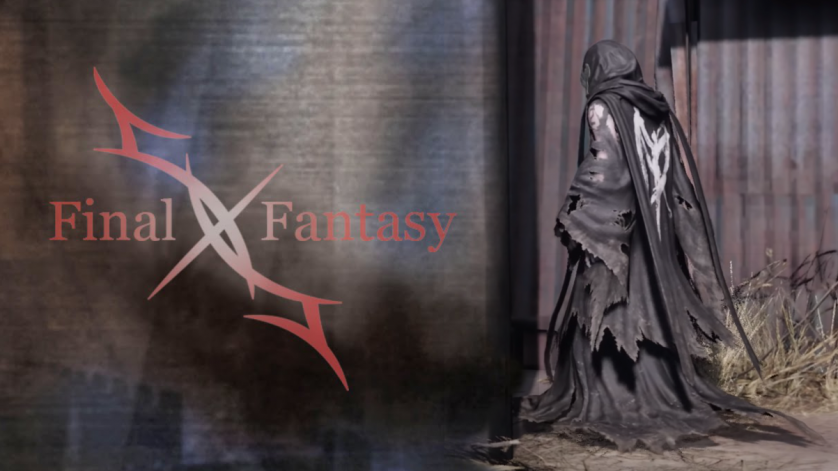
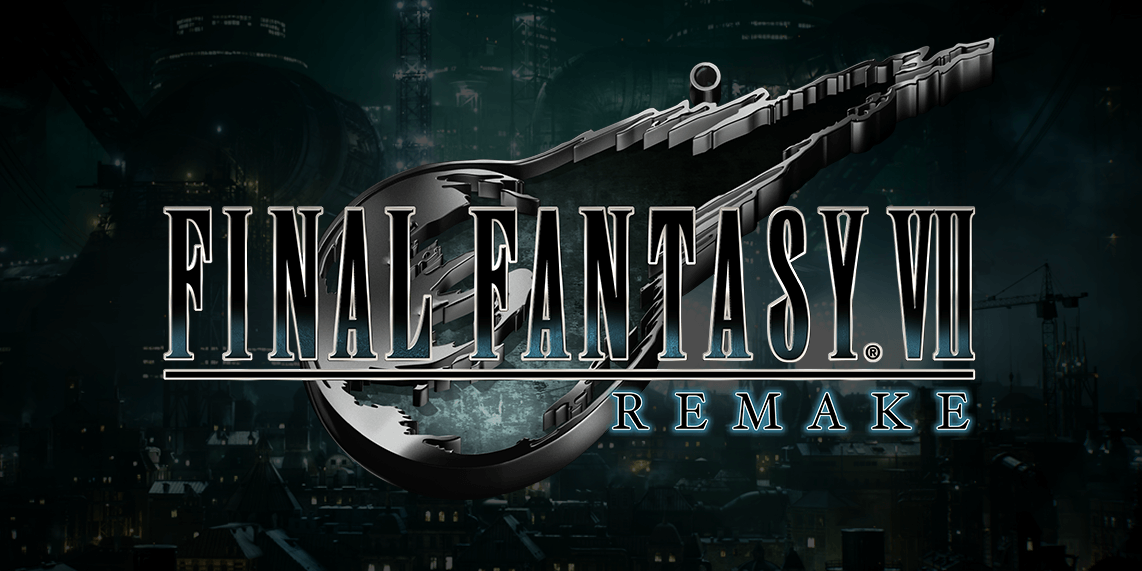
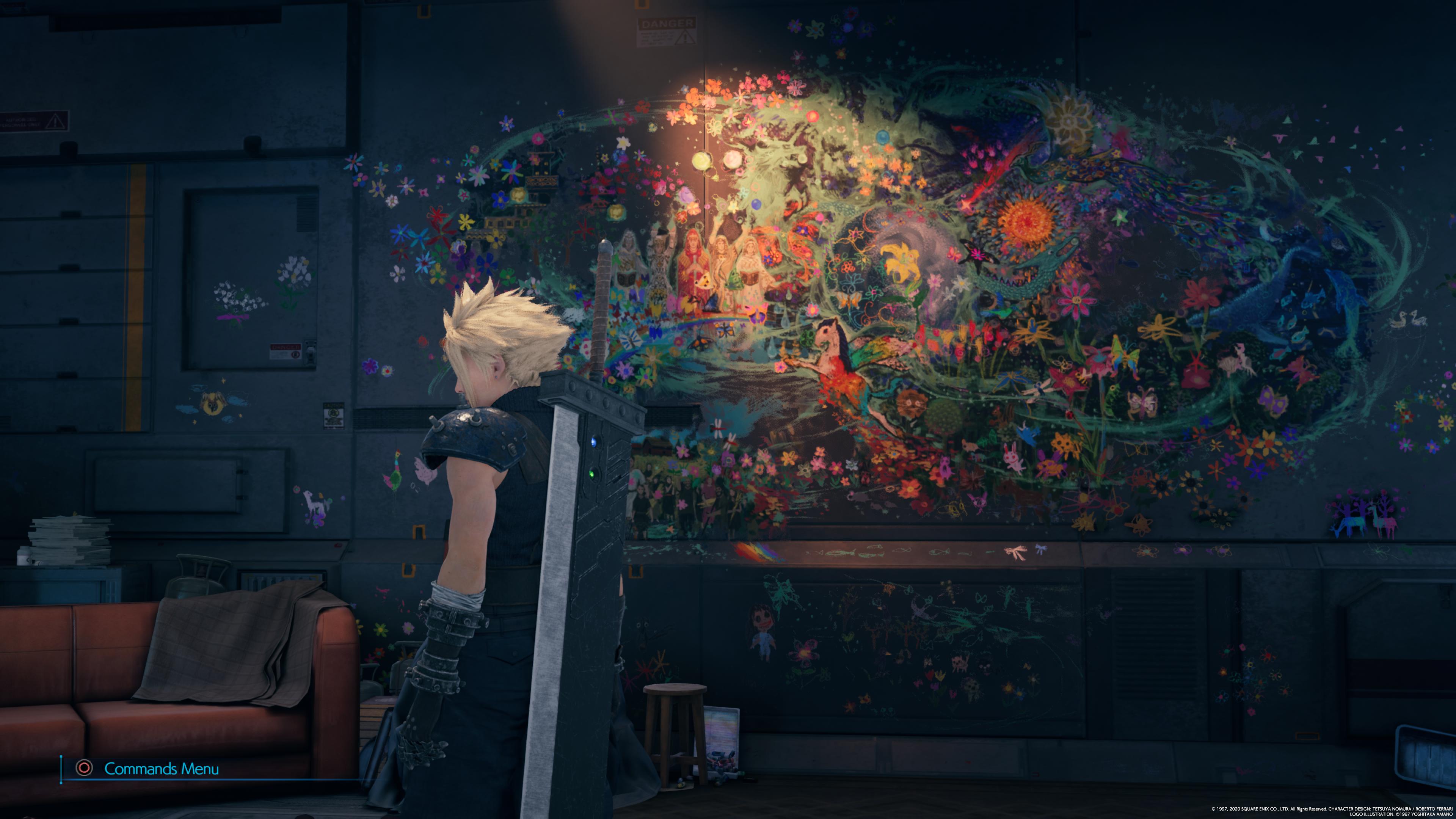
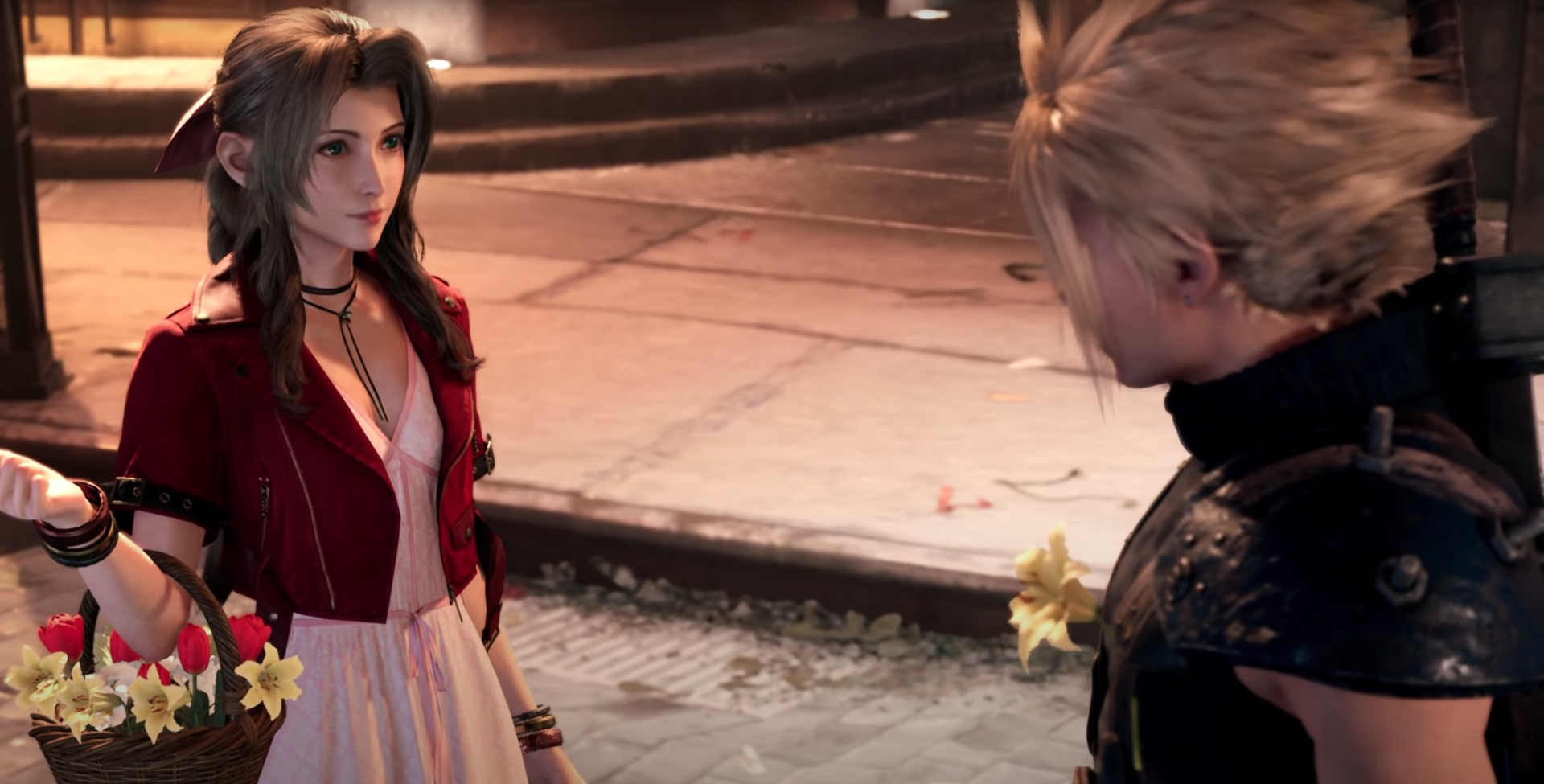

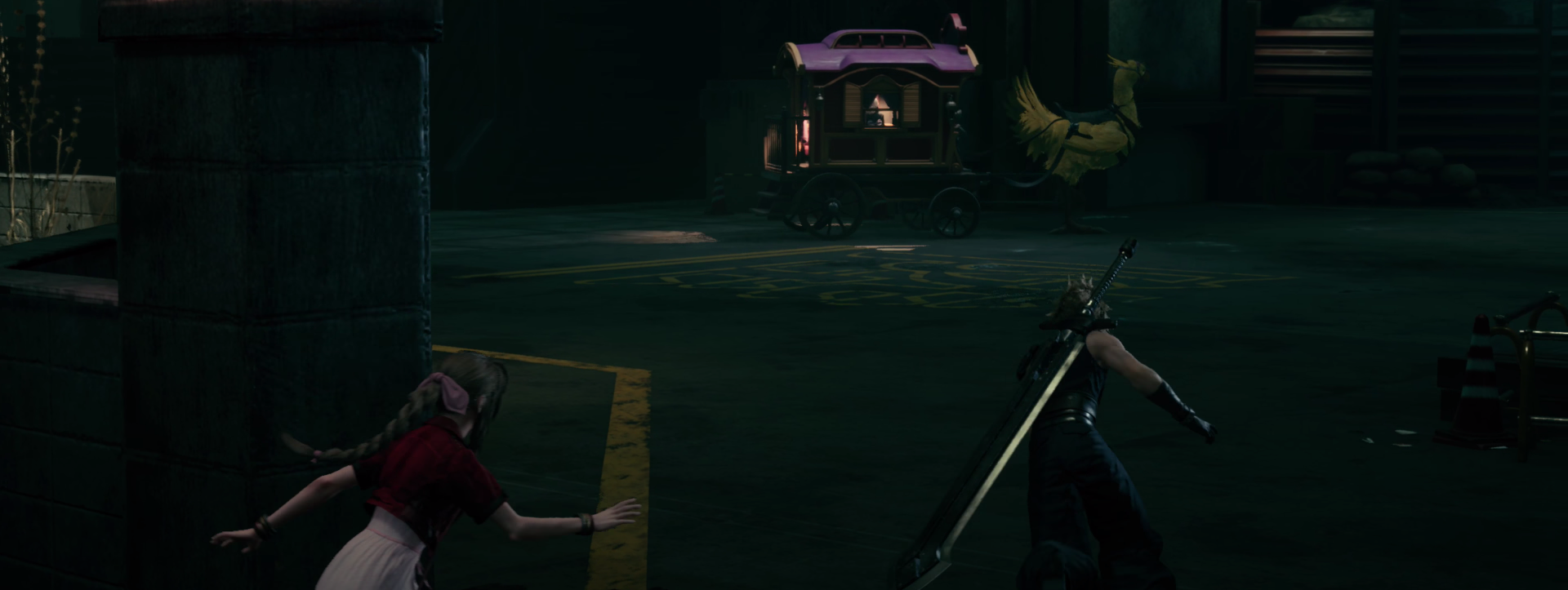
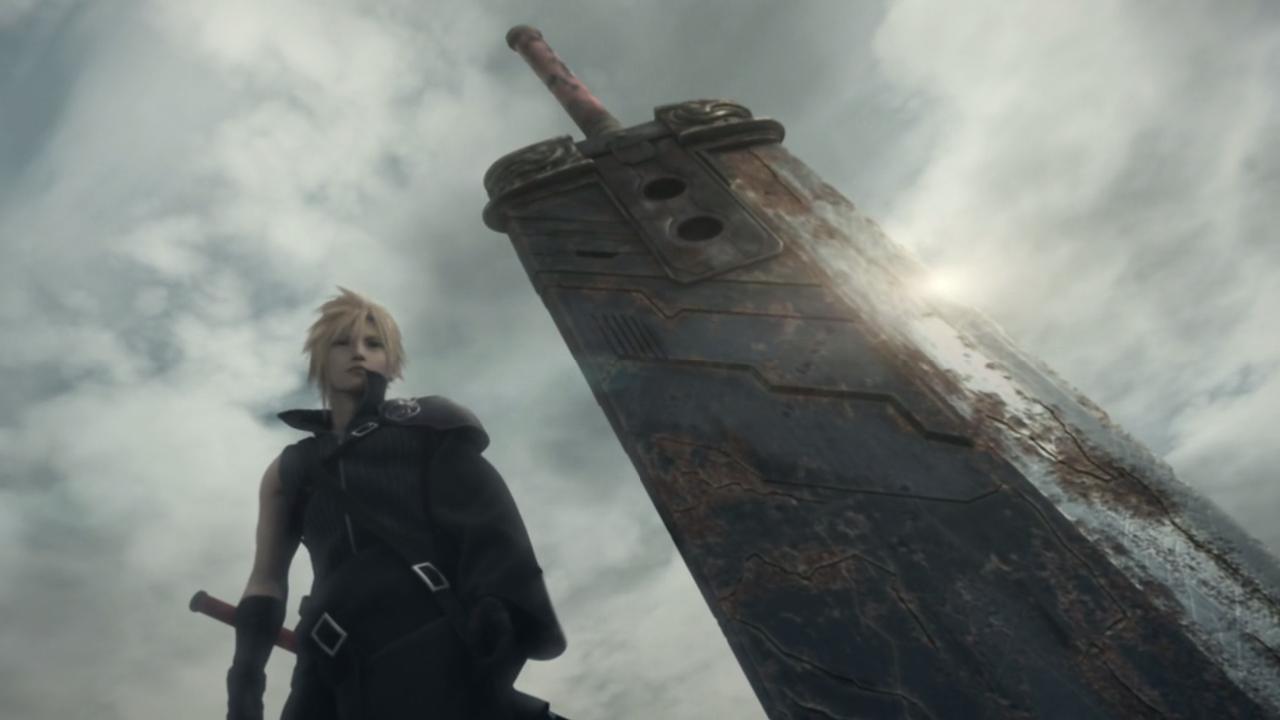
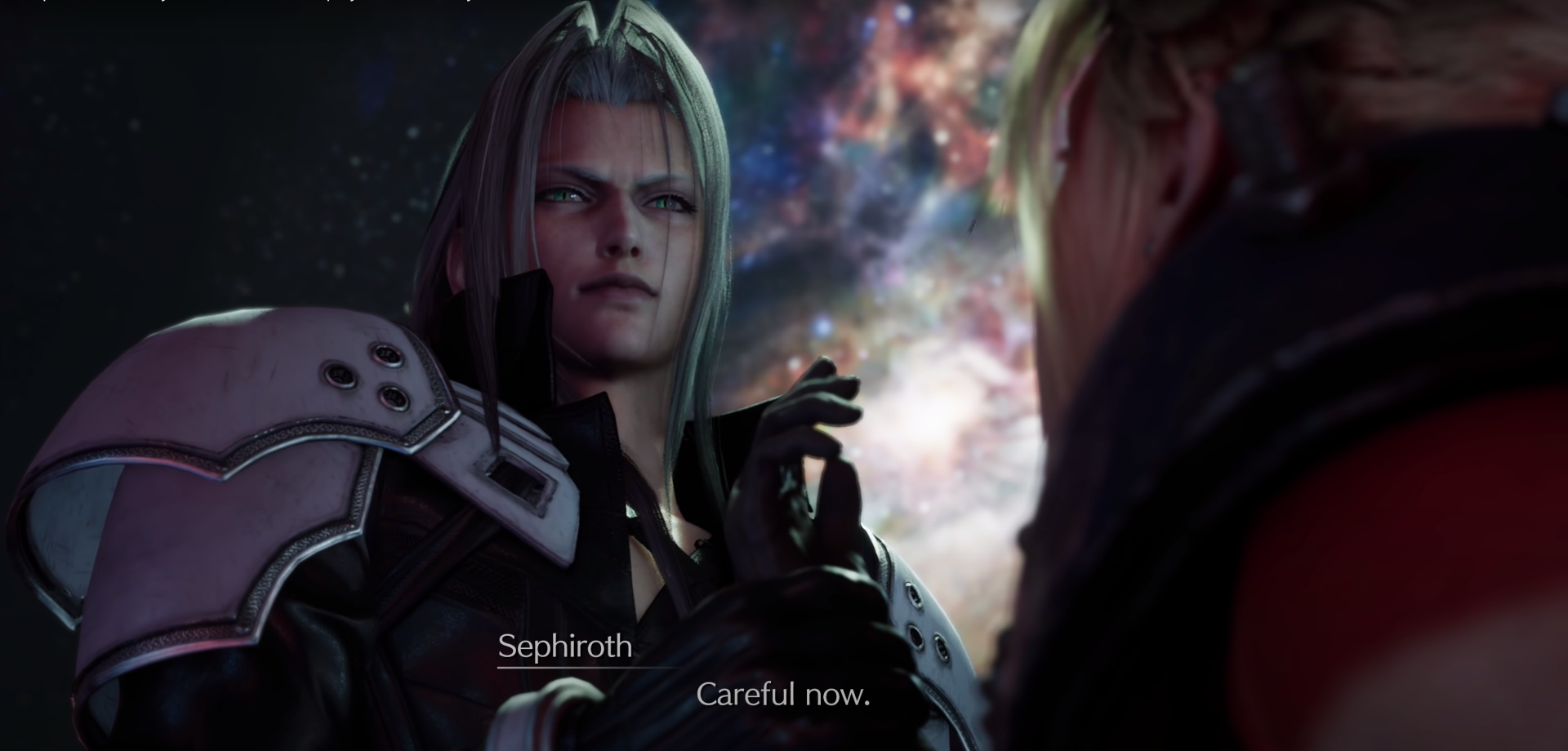
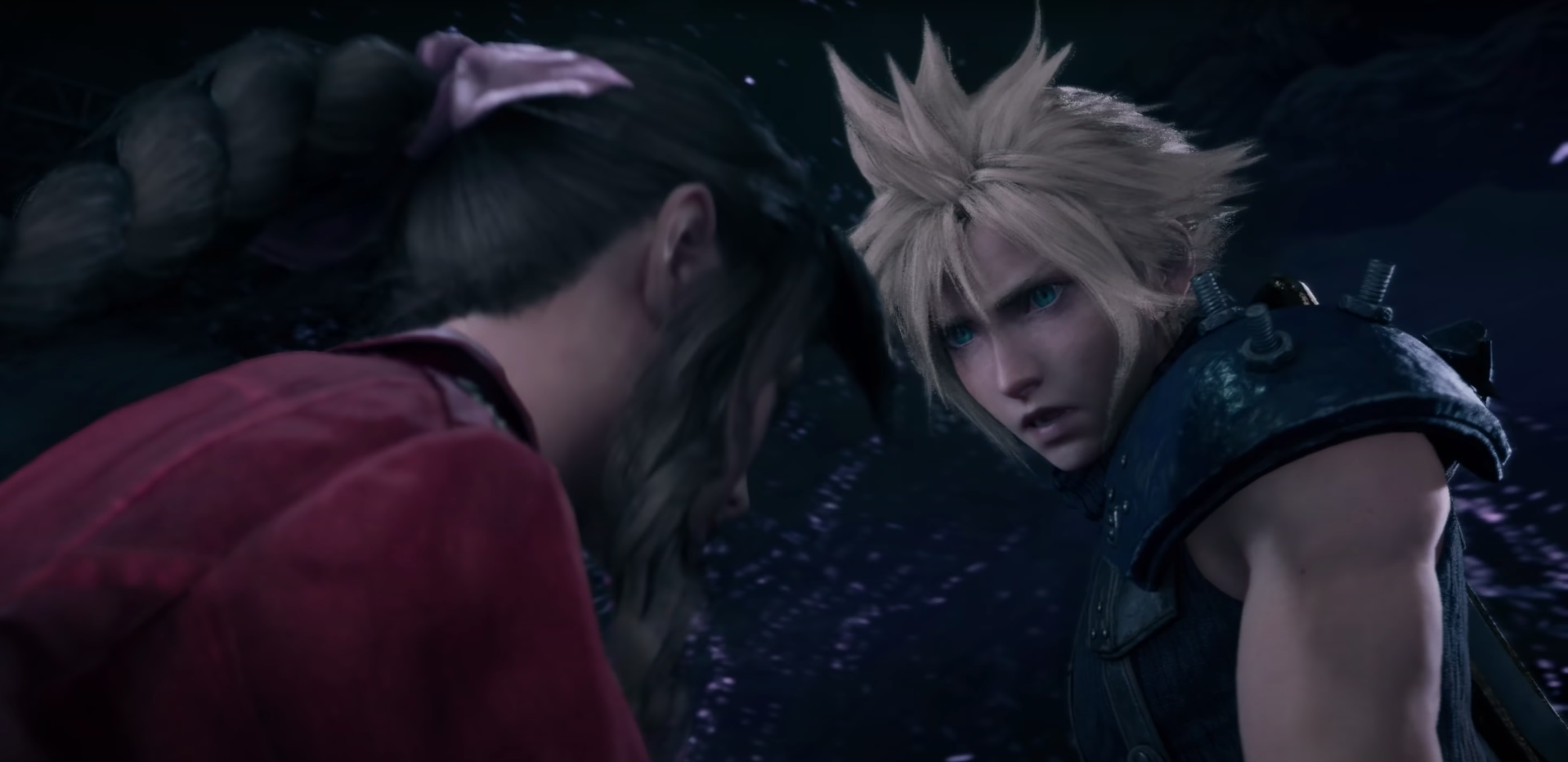
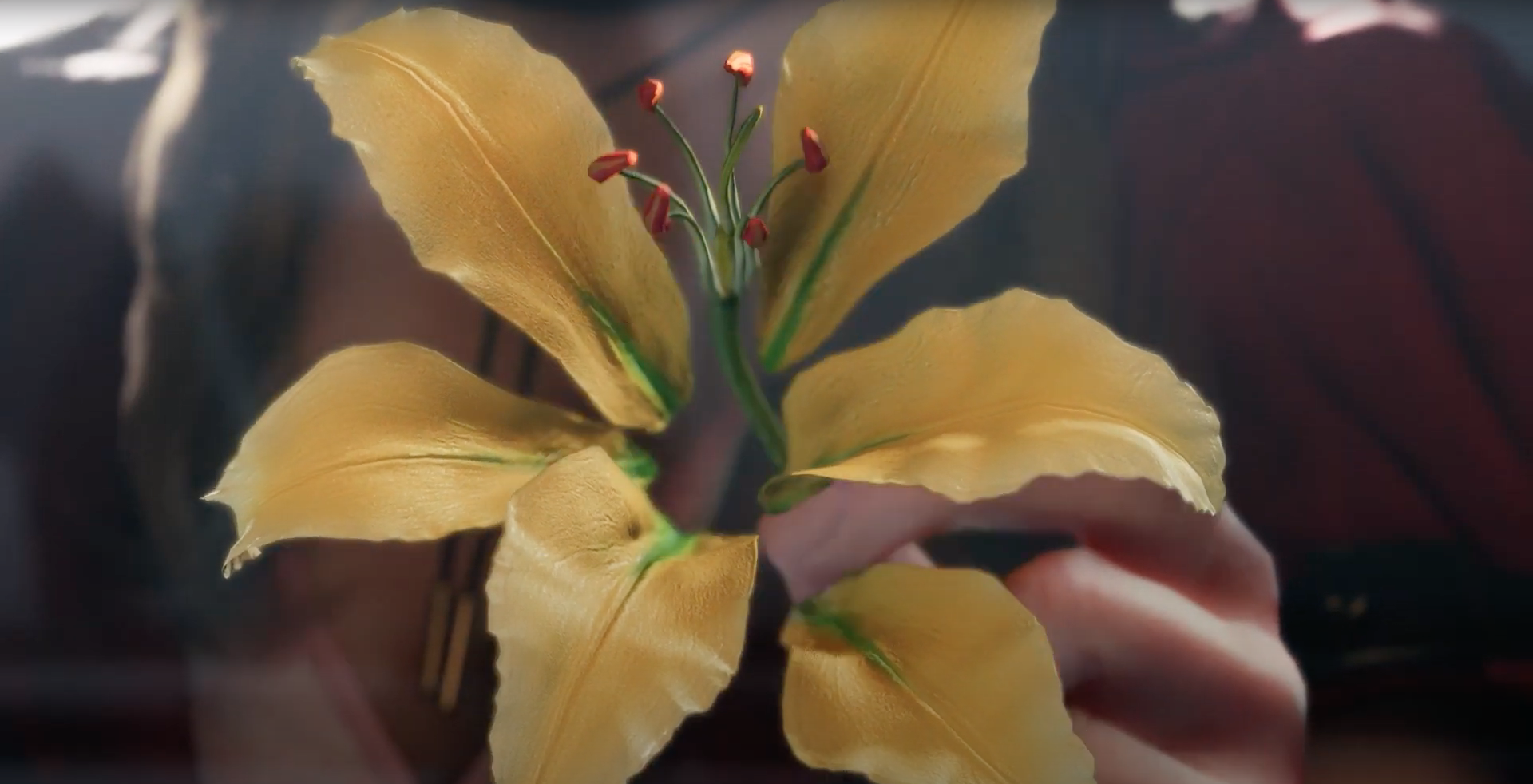
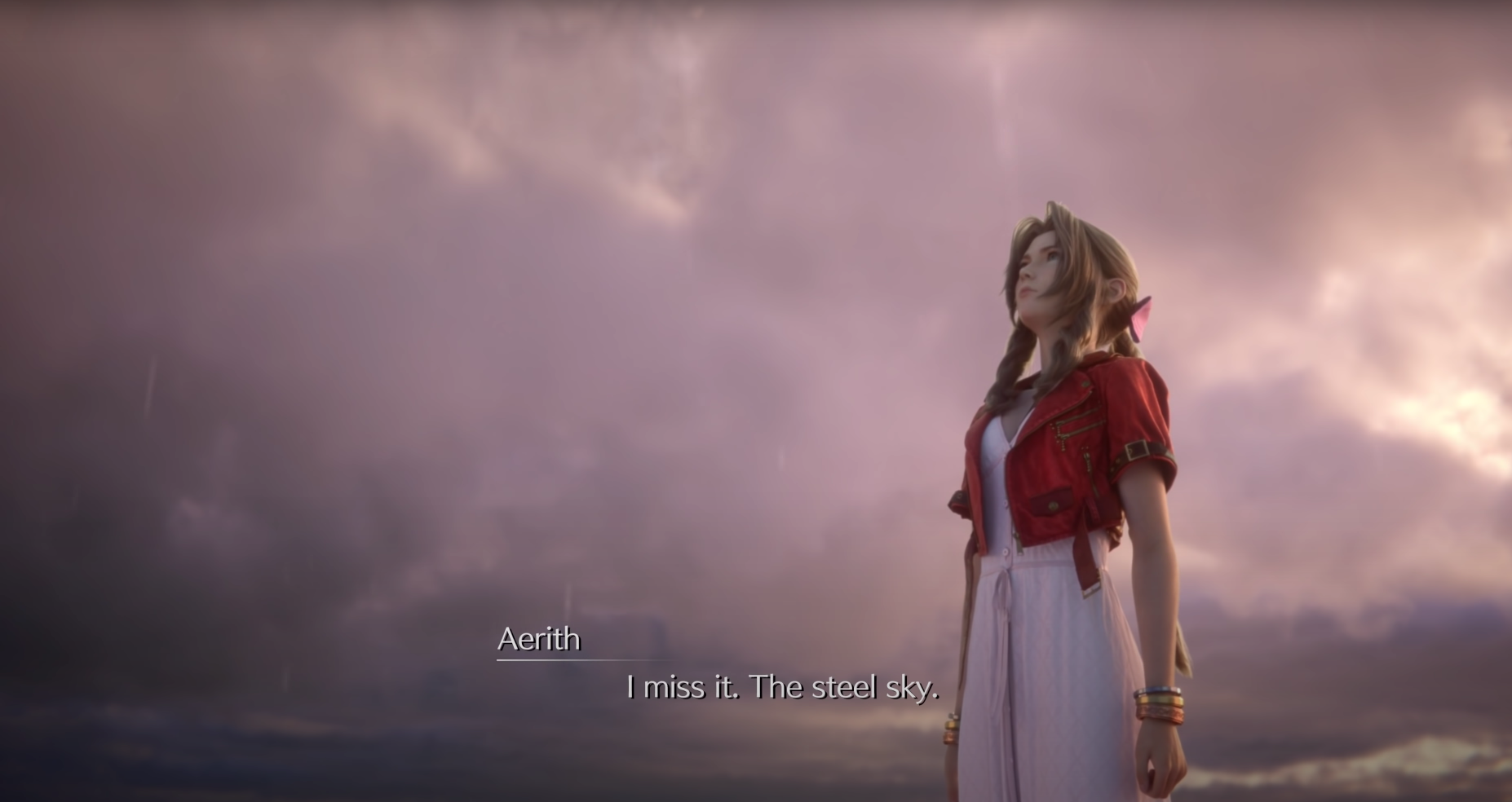
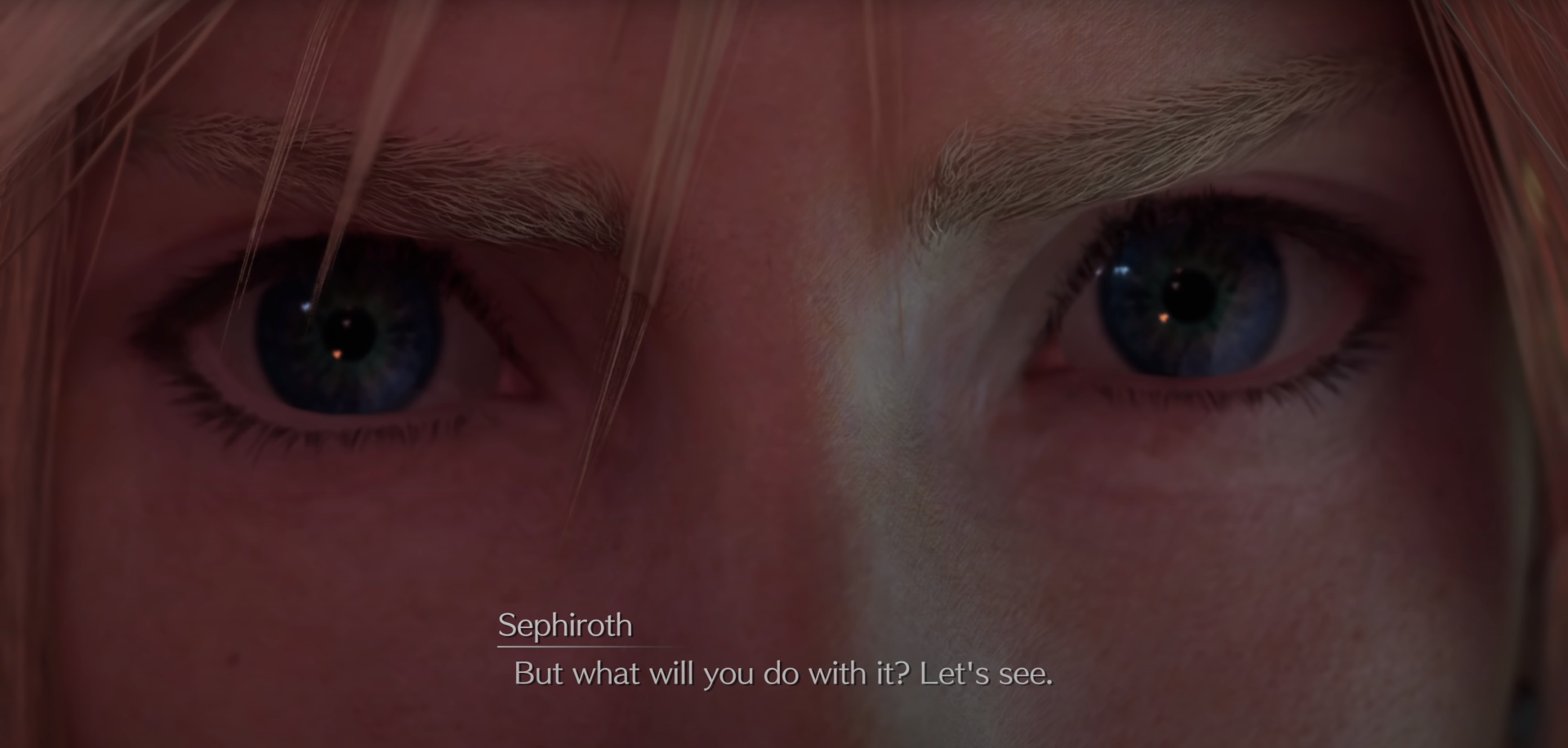
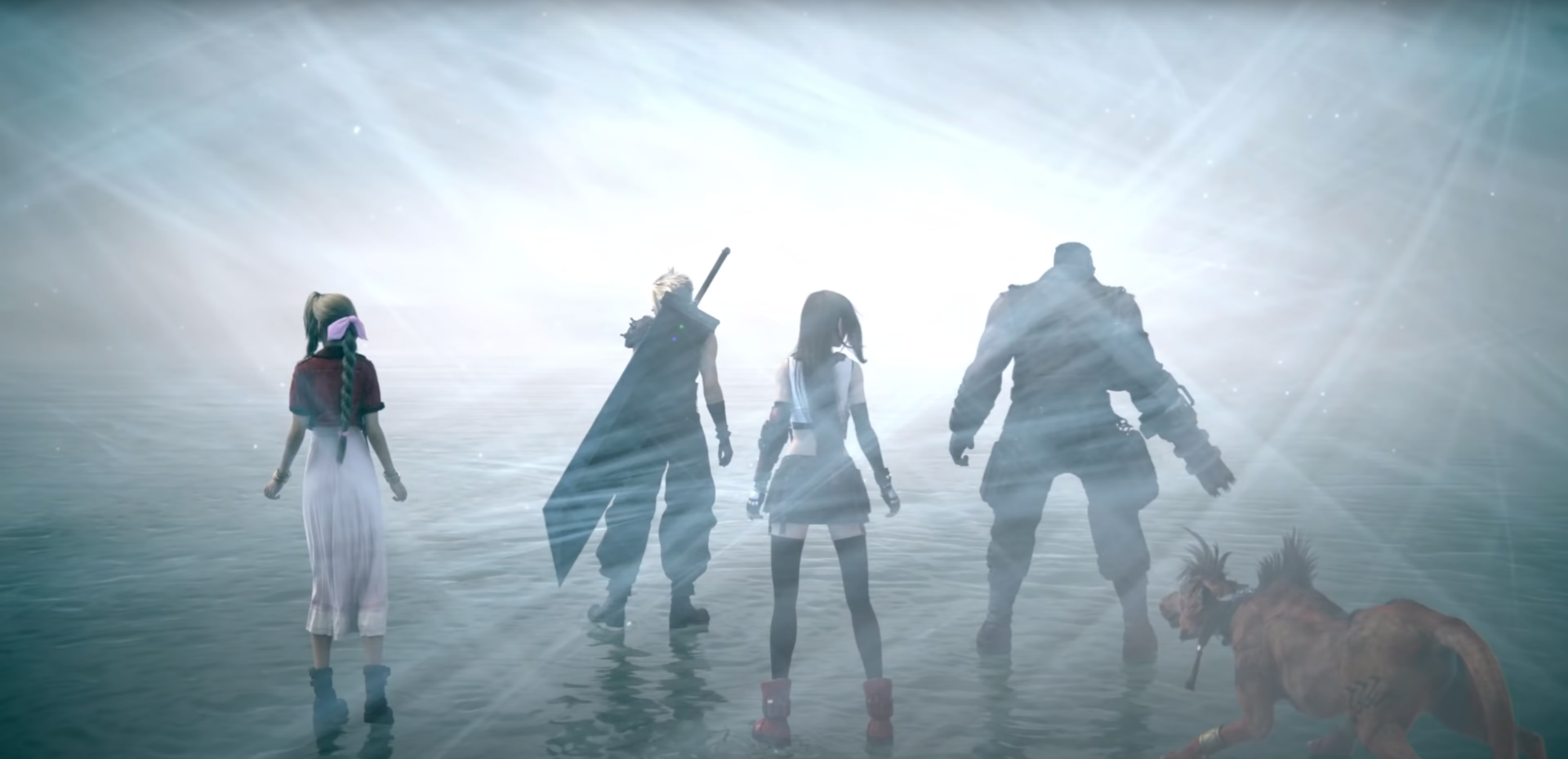
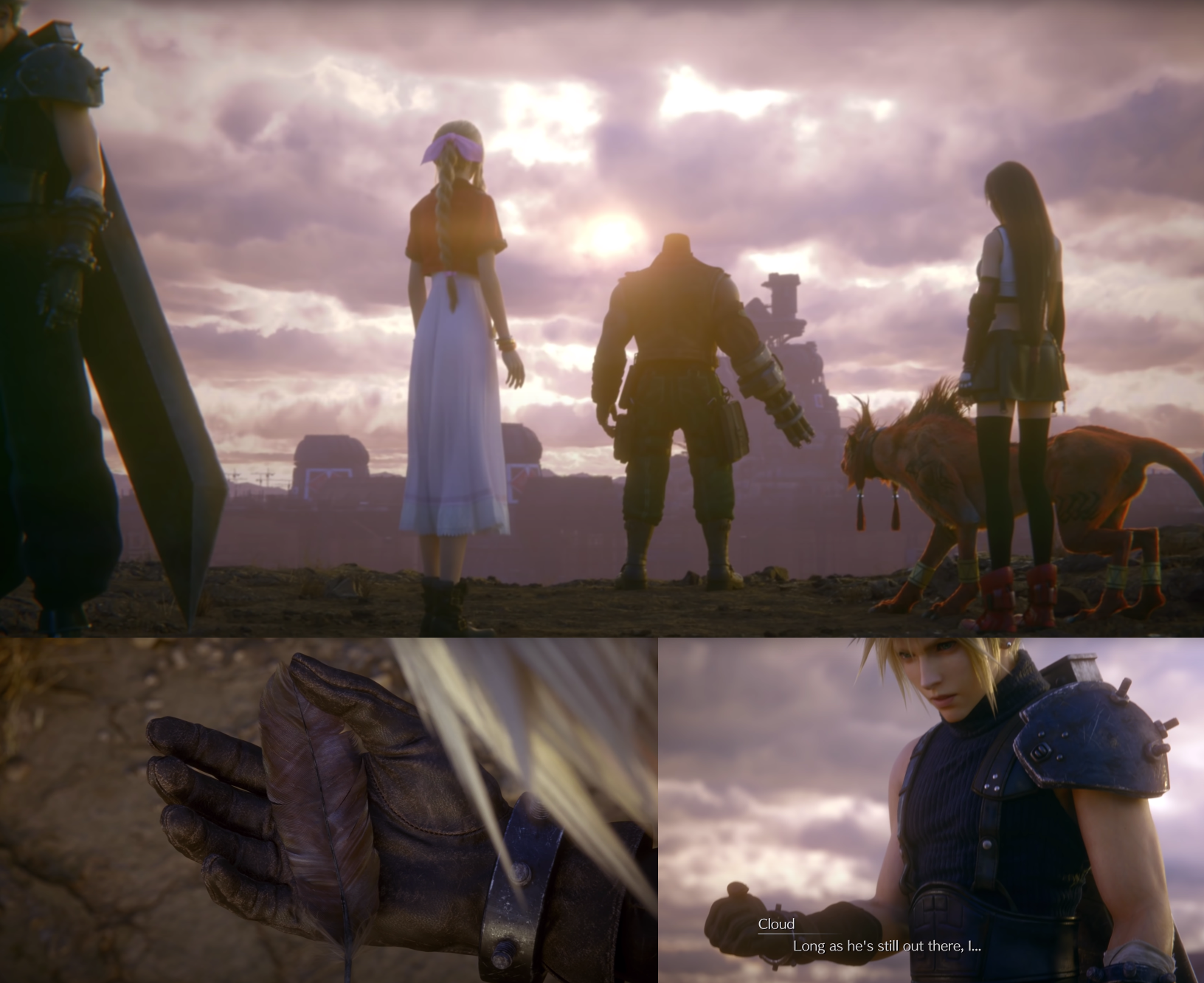
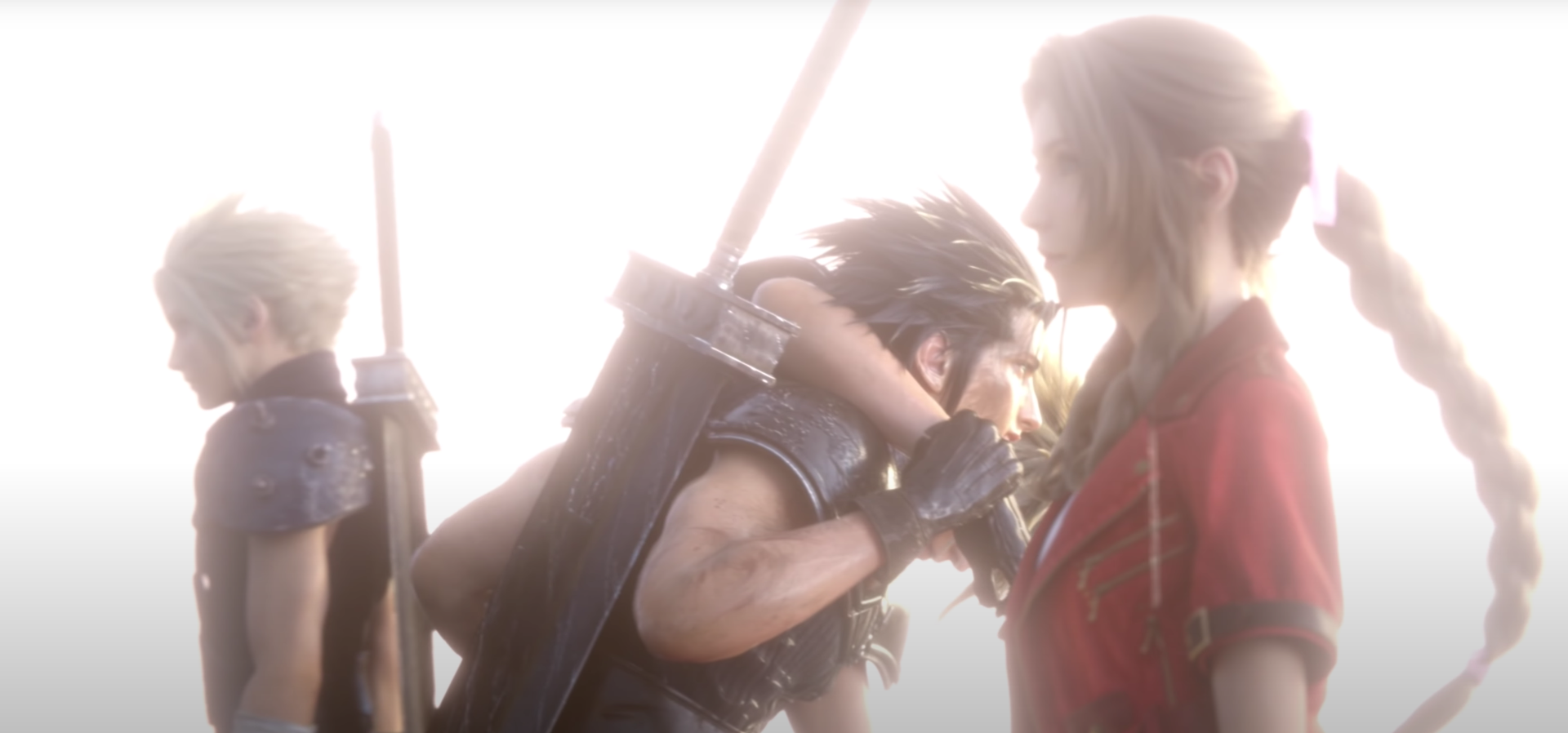
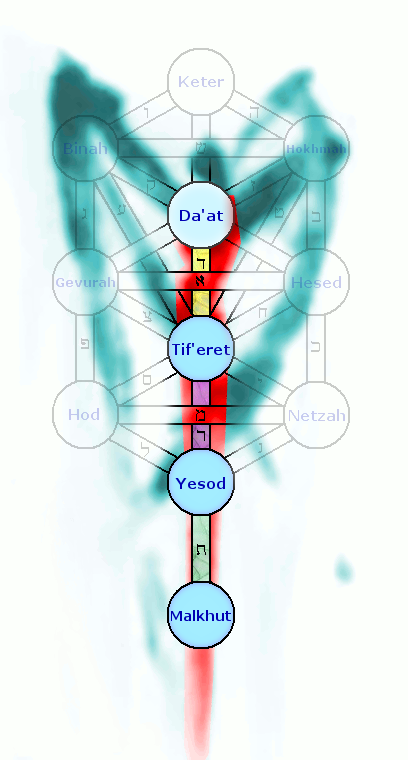
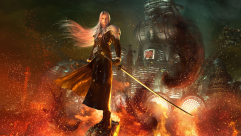
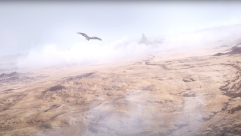
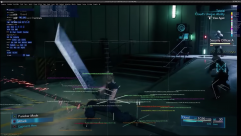

No comments yet
Log in or Register
This is absolutely incredible and I’m sharing it everywhere. Great work X- Soldier.
I’m really glad that you appreciated it, and thanks much for sharing it as well, Schrodingersbabyseal! Hope ya have a good weekend!
Very impressive article as alwyas X-Soldier. Tbh, I still don’t like the whole concept of fate and the meta elements for how overbearing they are. The whispers, specifically, are insanely invasive and not subtle at all. Nonetheless, this was a very interesting read and I especially enjoyed your interpretation of the perspectives of Cloud, Aerith and Sephiroth for the upcoming parts.
Thanks much, X7Strife. Honestly, I felt exactly the same way about them at first, but the more time I’ve spent looking at them, thinking about the original game, and considering what Remake means to the team who’s actually doing it, the more I’ve come to really appreciate what they mean to the story itself. They feel more valuable and less like some slapped on addition to make things new like they did at first.
Fate seems like an odd thing to examine at first, but when you’re talking about life & death… it’s an even more odd thing to ignore. It’s invasive because that’s what it’d be like going back & reliving events you want to change with your whole being, but not being able to. I can’t guarantee that they’ll nail the execution once it’s all said & done, but at this point I feel very confident in what they’re presenting with them & why.
Personally, I’ve found that it’s best not to think of the Whispers as being purely meta concepts – even though they do also serve that purpose in Remake. It helps a lot to view them just like the Planet’s other existing spiritual defense mechanisms like the Weapons & Materia. In the original game they would have been completely invisible to us, since that game just follows the Sefirot’s paths, rather than knowing things about the paths in order to try deviating from them. Everything about what they are matches with the original game in their overt physical presentation, as Final Fantasy VII has never been subtle with the presentation its spiritual concepts once you know what you’re looking at, which is what I wanted to do a lot of in this article.
There’re actually a lot of ways that the Whispers have already been adhering to the in-world mechanics with the the Planet & Shinra’s Science experiments, too. Despite being new and feeling a bit strange, they’re still perfectly aligned with spiritual core of Final Fantasy VII, as well as a lot of the in-game lore as well. I briefly mentioned some of that on Page 7 (in the bit about Stroke II) that I’ve been planning on breaking those things down in a future article, and this is all sort of why I wanted to cover these things first before poking around at some things about the Whispers from a purely in-game-world perspective.
I hope that whenever I get to dive into a bit more detail on them from that perspective that maybe that’ll help ya find them a bit more appealing & less invasive. Either way, I’m glad that you found some things to enjoy from all of this despite not being to hot on the Whispers! Have a good week!
Thank you for this thoroughly researched article!
I’d seen the joke(?) before that David Bowie is in every video game, but this really spells it out as far as Sephiroth. I could never quite get into Bowie’s art rock but now I want to see “The Man Who Fell to Earth”!
I wonder if Seph’s silhouette (fashion-wise) was also inspired by Bowie’s dress + boots for the cover of “The Man Who Sold the World”?
Glad to’ve provided it!
I saw a lot of those while I was doing research, and it was amusing that I was adding yet another example to that list. “The Man Who Fell to Earth” is quite an abstract Sci-Fi film and there’s a ton of nudity in it, but it’s SO very interesting looking at it as something with links to the themes in Final Fantasy VII.
I think that Sakaguchi had some input about Sephiroth’s & Aerith’s designs (they have similar hair because they were initially going to be siblings in the game), but I wouldn’t be too surprised if there were even more Bowie influences than I managed to pick up. 😀
I have to be honest: I did cry in the end.
I’m very sorry for your loss, but knowing that this is what ultimately allowed you to understand more deeply the authors’ intentions and feelings about where they want us to go in the game is inspiring to me. Making us reflect on life, death and our memories, once again, would be the greatest gift they could give us. I really hope you’re right.
It’s amazing what you’ve managed to do. Thank you.
That means a lot to me, so thanks so very much for taking the time to let me know. I did cry several times over the course of doing research & writing this. Additionally, I just learned over the weekend that another friend of mine passed away unexpectedly – and having just written all of this really helped me a lot in processing that, too. I’m working on a semi-companion piece to this one that covers some different but related topics, so I’m hoping it’ll be just as insightful.
Again, thanks for reading through this and letting me know, & I hope that you have a really wondering week!
I haven’t even finished reading this and my mind is already blown. I’ve also been reading the unused dialogues from the OG and man does it give a lot of insight into some of the way remake was done. At least in my opinion. FF7 is my favorite game/story of all time and deep diving into understanding it has been a passion since remake was released. Thank you so much for all this research and concise explanation. I wish i had a friend like you to talk to about all this ff7 passionate stuff, no one around me GETS it.
There was an interview with Kitase in Famitsu that got translated today, and it loosely touched on a couple things I mentioned here in ways that were super satisfying.
I’m glad that you’re enjoying it so far & hope that it carries on with you to the end! I’m slowly working on more, so hopefully that’ll help! It’s a passion that I deeply enjoy, so thanks for taking the time to read & provide extra encouragement for doing this sort of thing!
Hello X-SOLDIER!
I finished the original FF VII a couple of days ago and was really impressed by story, characters and themes of the game and I want to understand more. Unfortunately, I can’t play the Remake right now and I wanted to ask if your whole article has Remake spoilers or I can read some early pages. Or maybe there is some other good article with in-depth analysis of the original game?
Heya literious! I’d very much recommend steering clear of this one for now. There are definitely little bits and pieces of Remake-related information scattered throughout, since the symbol that it’s focused on only appears in Remake.
Really glad that you finished the original though, and you’re more than welcome ta join us on the forums to chat about things there!
In some translations Netzah is pronounced more like Netzach…which would be interesting, since Netzah is broken off from the tree. Remake could be attempting to reestablish his presence.
Just amazing, i’m looking forward for your next analysis!
You bring so much to fans of ffvii like me
thanks and thanks again